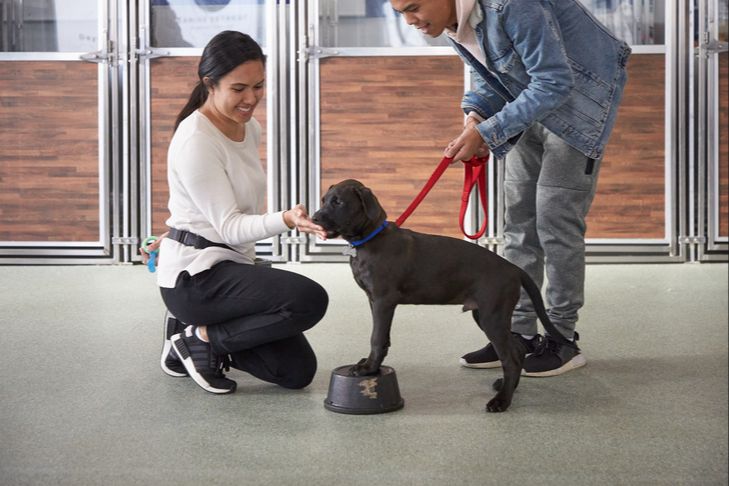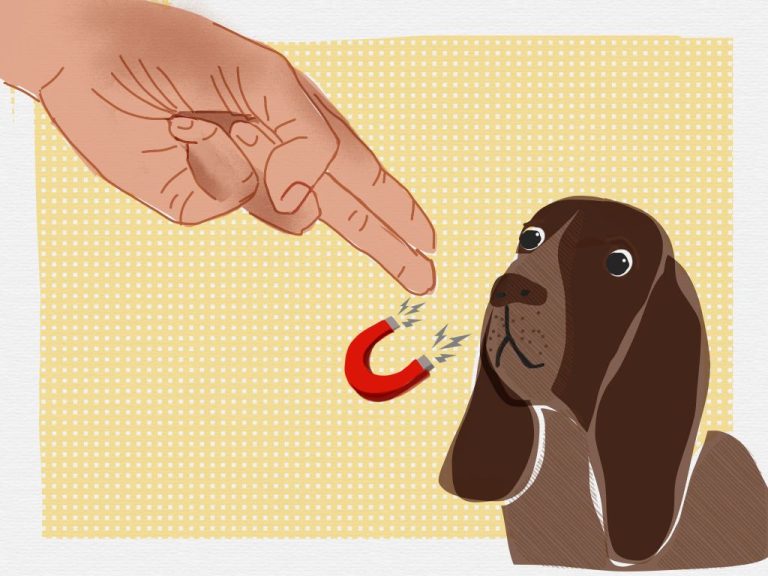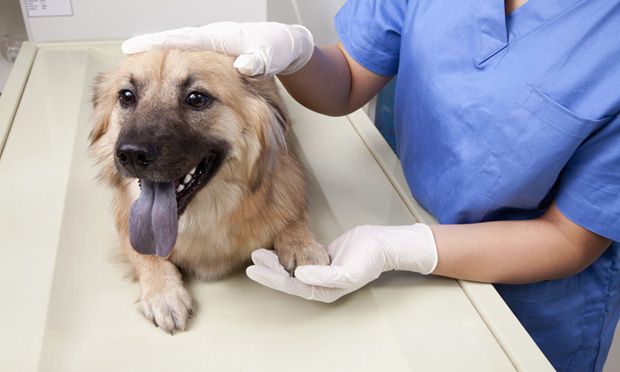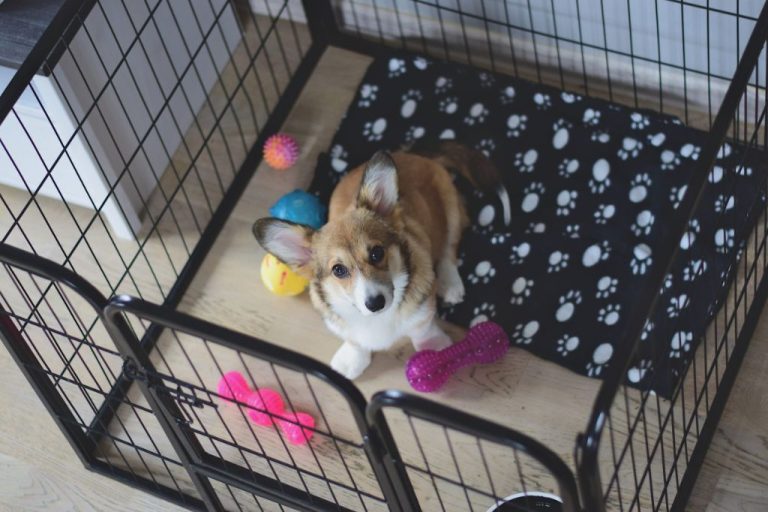Socialization Strategies: Introducing Your Dog To New Environments
The Importance of Socialization
Socialization is critical for all dogs, especially puppies. According to Longwood Veterinary Center, socialization teaches dogs how to behave appropriately when encountering new environments, people, animals, and situations. Well-socialized dogs will feel comfortable instead of anxious or fearful when exposed to novel experiences.
Socialization should start early in a puppy’s life, during the prime socialization period between 7 and 16 weeks old. As noted by Wag Walking, the most effective socialization occurs before 12 weeks of age. Exposing puppies to a wide variety of sights, sounds, smells, textures, and situations during this impressionable stage sets them up for success as adult dogs.
Without proper socialization as a puppy, a dog is more likely to react fearfully or aggressively in unfamiliar circumstances. However, it’s never too late to socialize and desensitize an adult dog. Patience and positive reinforcement can still help older dogs gain confidence. The key is to start socialization as early as possible to prevent anxiety and behavior issues down the road.
Prepare the Puppy
It’s recommended to start socialization as early as 8 weeks old, according to the AKC and WebMD (https://www.akc.org/expert-advice/training/puppy-socialization/; https://www.webmd.com/pets/dogs/socializing-new-puppy). Puppies go through a critical socialization period between 3-16 weeks old, so it’s important to expose them to new things during this time (Preventive Vet, https://www.preventivevet.com/dogs/when-to-start-socializing-your-new-puppy).
Make sure your puppy’s vaccinations are up-to-date before socialization. This provides protection against contagious diseases while exploring new environments. Always reward calm, friendly behavior with treats and praise during the socialization process. This reinforces good manners.
New Environments
Gradually introducing your puppy to different environments is crucial for socialization. Start by taking your puppy to new places like the city, country, indoors, and outdoors. Make sure to go at your puppy’s pace and keep these experiences positive with treats, toys, and praise.
Begin with short trips to new environments, even just standing outside or going for a very short walk around the block. Provide ample rewards and affection for your puppy remaining calm and confident. Slowly work up to longer excursions as your puppy acclimates.
It’s ideal to expose your puppy to a wide variety of locations including apartments, office buildings, car rides, elevators, parks, hiking trails, beaches, shops, crowds of people, and more. This will prep your puppy for anything life may bring and prevent fear later on. For example, a puppy that only experienced a house and backyard might become frightened by a busy city street.
Make sure your puppy has had all necessary vaccinations before visiting public places where other dogs frequent. Also take care not to overwhelm your puppy. If they seem nervous, anxious, or overstimulated, calmly guide them away from the stressor and try again later at a farther distance.
With positive, controlled experiences in all sorts of environments during the prime socialization window, you’ll raise an adaptable, resilient pup eager and able to handle anything the world throws at them. For specific tips, check out “Socializing Puppies to People and the Environment” (https://summerbrookgoldens.com/puppy-socialization/).
New Sounds
It’s important to get your puppy used to a variety of everyday sounds so they don’t become fearful or reactive to them later in life. Start exposing your puppy to mild sounds at a low volume like the radio or TV. Gradually introduce louder sounds like vacuums, blenders, doorbells, and cars. Always pair new sounds with rewards like treats or praise so your puppy learns to have a positive association.
The Preventive Vet recommends starting sound socialization early, beginning with mild, everyday noises and working up to louder sounds very gradually (https://www.preventivevet.com/puppy-socialization/sounds). It’s best to begin sound socialization during the critical period between 3-12 weeks old. However, it’s never too late to desensitize an older dog to sounds that make them anxious or reactive.
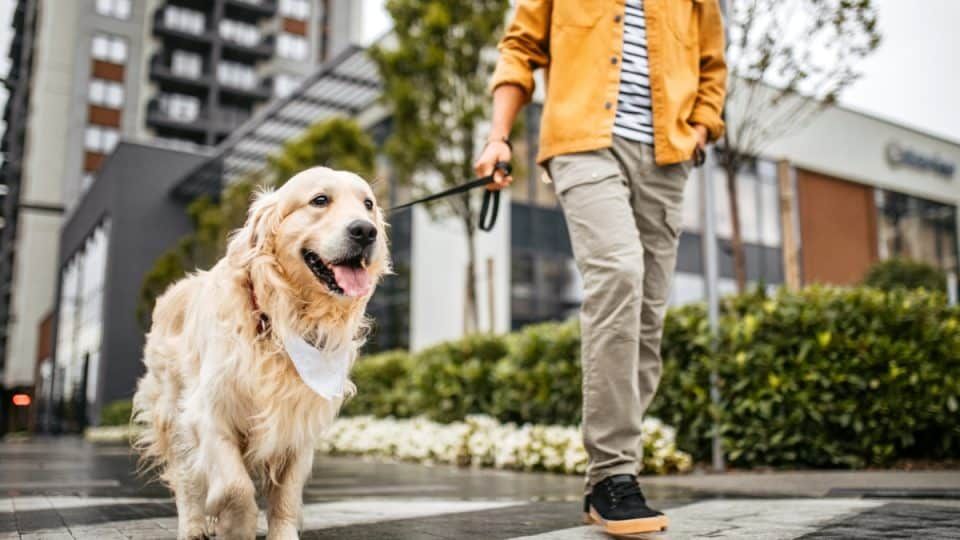
Create structured training sessions to introduce new sounds in a controlled manner. For example, play audio of vacuum cleaners or other noises through speakers at a low volume while rewarding calm behavior. Slowly increase the volume over multiple sessions until your puppy remains relaxed at normal levels. Always keep sessions positive and end on a good note before your puppy gets overwhelmed.
With patience and positive reinforcement, you can help your puppy handle all kinds of noises with confidence. Just take introductions gradually and make sure sound socialization is a rewarding experience.
New Textures
Introducing puppies to different types of surfaces and textures helps build their confidence and coordination as they grow. Start with familiar surfaces like carpet and grass, then gradually expose them to different types of flooring and ground surfaces. According to the puppy socialization checklist from Pupford, important surfaces to socialize puppies with include:
Concrete – Let them walk on sidewalks and driveways. The hard, smooth feeling under their paws will be new.
Tile or wood floors – Slowly lure them into walking on these slick floors, praising and treating often.
Grass – Encourage exploration and play. Grass provides a soft, uneven texture.
Carpet – The plush feeling helps build confidence indoors.
Make introducing new textures a fun game. Bring treats and encourage the puppy to walk across each new surface, praising excitedly. Start with very short distances and work up to longer walks as the puppy gains confidence. Go slowly and keep sessions positive. With patience and practice, the puppy will happily walk on a variety of surfaces.
New People
It’s important to socialize your puppy with all kinds of people so they become comfortable around strangers. Inviting over friends, neighbors, and kids is a great way to expose your puppy to new people in a controlled environment. Have these visitors offer your puppy treats and gentle pets so they associate human interaction with something positive. You want your puppy to enjoy and seek out affection from strangers through this socialization process.
Start with short, positive introductions between your puppy and new people. Reward calm behavior with praise and treats. Gradually increase the time spent around different visitors as your puppy becomes more comfortable. With consistent, controlled exposure to new people, your puppy will gain confidence and learn good manners when interacting with strangers of all ages.
New Animals
Introducing your puppy to new animals in a careful, controlled way is essential for their social development. Puppies need to learn how to properly interact with other pets like cats and dogs to prevent fear or aggression later on. Arrange calm supervised meetings with known friendly dogs or cats to get your puppy used to being around other animals (AKC). Keep your puppy on a leash and go slowly at first, letting them sniff the other animal from a distance. Give lots of praise and treats for polite, appropriate interactions. As your puppy becomes more comfortable, allow brief play sessions with gentle dogs who match their energy level. however, make sure to continuously monitor all interactions and do not allow rough play. The goal is controlled, positive experiences that build your puppy’s confidence around other animals.
New Handling
Getting your puppy comfortable being touched and handled in different places is an important part of socialization. Start by gently touching your puppy’s paws, ears, tail and mouth while giving treats and praise. Make each touch brief at first, then gradually increase the duration as your puppy remains relaxed. According to the ASPCA, handling exercises should always be a positive experience for your pup.1
You can lift your puppy up briefly, supporting their body weight, give a treat, then set them back down. Reward calm behavior and don’t force handling if your puppy seems anxious or pulls away. Go slowly so your puppy learns to trust you. Verbally praise and give treats during and after each handling session. With positive reinforcement over time, your puppy will become comfortable being touched, held and examined. Proper handling prepares them for vet visits, grooming and other interactions as adult dogs.
New Situations
It is crucial to gradually expose your puppy to new situations to start socialization (AKC). Start by working up to car rides, elevators, stairs, and people in costumes. Associate each new situation with rewards and fun activities so your puppy has positive experiences. For example, bring treats in the car and let your puppy look out the window on short rides around the block. Have strangers your puppy meets give treats and pets so they seem friendly. Climb a few steps or ride an elevator just a couple floors at first, giving praise and treats. Increase the intensity and duration over many sessions, taking gradual steps to avoid overwhelming your puppy. With patience, you can build up to riding in cars comfortably, climbing flights of stairs, and approaching people in hats or costumes without fear (Chewy). If you make socialization an enjoyable process, your puppy will become confident in many novel situations.
Troubleshooting
If your puppy seems frightened or overwhelmed in a new environment, don’t force the issue. It’s always better to take things slower rather than move too fast. Try taking a break and giving your puppy some time to calm down. You can attempt the exposure again later in a more relaxed setting.
Socialization takes patience, especially for shy and fearful puppies. If your puppy is hesitant or scared the first time you try a new experience, don’t worry – simply try again another day when your puppy seems less stressed. Go at your puppy’s pace and offer encouragement and praise for any small acts of bravery or curiosity.
With time, positive reinforcement, and gradual exposure, your puppy will gain confidence. But never rush the process or punish fearful behavior. Remaining patient and letting your puppy warm up on his own timeline is key to building good experiences and associations.

